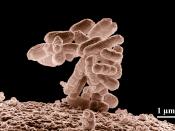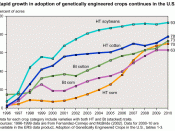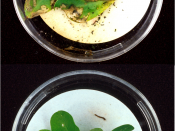Genetic engineering is a laboratory technique used by scientists to change the DNA of living organisms. DNA is the blueprint for the individuality of an organism, which relies upon the information stored in its DNA for the management of every biochemical process. The life, growth and unique features of the organism depend on its DNA. The segments of DNA which have been associated with specific features or functions of an organism are called genes (Mayeno 2).
Molecular biologists have discovered many enzymes which change the structure of DNA in living organisms. Some of these enzymes can cut and join strands of DNA. Using such enzymes, scientists learned to cut specific genes from DNA and to build customized DNA using these genes. They also learned about vectors, strands of DNA such as viruses, which can infect a cell and insert themselves into its DNA (Mayeno 2).
With this knowledge, scientists started to build vectors which incorporated genes of their choosing and used the new vectors to insert these genes into the DNA of living organisms.
Genetic engineers believe they can improve the foods we eat by doing this. For example, tomatoes are sensitive to frost. This shortens their growing season. Fish, on the other hand, survive in very cold water. Scientists identified a particular gene which enables a flounder to resist cold and used the technology of genetic engineering to insert this 'anti-freeze' gene into a tomato. This makes it possible to extend the growing season of the tomato (Avery 2).
At first glance, this might look exciting to some people. Scientists want to transfer desirable qualities from one organism to another, for example, to make a crop resistant to an herbicide or to enhance food value. Deeper consideration reveals serious dangers. Imprecise Technology is when a genetic engineer moves genes...


